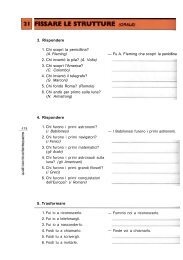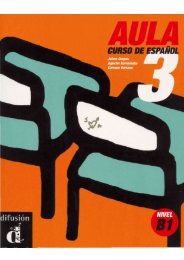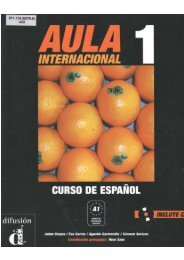III. The Beginnings of Transformation
III. The Beginnings of Transformation
III. The Beginnings of Transformation
You also want an ePaper? Increase the reach of your titles
YUMPU automatically turns print PDFs into web optimized ePapers that Google loves.
BEGINNINGS OF TRANSFORMATION<br />
<strong>The</strong>se nomads took up their abode in deserted or semideserted rural<br />
areas. As Byzantine power declined and the Turkmens pushed into new<br />
border regions, the population must <strong>of</strong>ten have fled the countryside to<br />
towns such as Sozopolis, Ghonae, and Laodiceia, or to other more secure<br />
regions in the highlands. Thus many <strong>of</strong> the border towns were isolated by<br />
Turks who had occupied the plains and rural areas. With the destruction<br />
<strong>of</strong> Dorylaeum, they occupied the plains <strong>of</strong> Bathys with their tents and<br />
livestock, and no urban center existed on the spot <strong>of</strong>Dorylaeum for about<br />
one hundred years. Cotyaeum must have undergone a similar experience<br />
when the sultan sacked it after Manuel's death, and the Turkmens moved<br />
in. 326<br />
Choma and the towns <strong>of</strong> the Pentapolis suffered the same fate.<br />
Hierapolis and Tripolis were both destroyed and deserted, and the<br />
nomads came into these regions also. Only Laodiceia and Chonae<br />
survived as Byzantine urban outposts, but they were isolated by the<br />
heavy nomadic settlements around them. It is as a result <strong>of</strong>this process <strong>of</strong><br />
nomadization that Byzantine place names have virtually disappeared in<br />
the region between Ushak on the north, Isparta and Uluburlu in the<br />
southeast, and Chonae in the southwest. 327<br />
<strong>The</strong> conquest <strong>of</strong> this area by the<br />
Turks was a long and destructive process that lasted for a century.<br />
<strong>The</strong> conquest involved a gradual settling down <strong>of</strong> the Turkmen bands and<br />
the withdrawal <strong>of</strong> the Byzantine populations. With the retreat <strong>of</strong> the latter<br />
and the settlement <strong>of</strong> the conquerors, new Turkish names replaced older<br />
Byzantine place names. <strong>The</strong> prolonged hostile relations <strong>of</strong> Byzantines and<br />
Turks in this part <strong>of</strong> Anatolia resulted in the destruction <strong>of</strong> Byzantine<br />
society 328<br />
and in the nomadization <strong>of</strong> large areas. This process was<br />
repeated in parts <strong>of</strong> the northwest corner <strong>of</strong> the plateau about Cotyaeum-<br />
Dorylaeum, and in the Pamphylian plain. 329<br />
<strong>The</strong> appearance <strong>of</strong> the nomads on the borders is also connected with<br />
the fact that the sultans sent them there to carry on the djihad with the<br />
Christians. <strong>The</strong> role <strong>of</strong> these Udj Turkmens (Turkmens <strong>of</strong> the border as<br />
the contemporary Arab sources term them) 330<br />
in the holy war is quite<br />
tabernaculis de pascuis ad pascua se transferre cum gregibus et armentis." And, p. 156,<br />
"gens ista, gens odiosa silvestris indomita et effrena nullius est subdita ditioni; hii sunt<br />
predones qui soliti devastare terras finitimas ipsum eciam soldanum inquietare non<br />
verentur bellis frequentibus et rapinis." Gesta Federici, p. 86, "Sunt enim agrestes<br />
Turchi, qui nullo detinentur imperio et nulla loca possident, sed morantur in agris."<br />
And, p. 87, "Non habent civitates, sed morantur in agris; habent etiam caput unum, qui<br />
illos precedit, habent animalia, fructus et pugnant cum arcubus, lignis et lapidibus."<br />
Also, 95, "qui sunt homines agrestes et sine lege et ratione." See Brosset, Georgie, I,<br />
passim, especially pp. 358-359, on their habits.<br />
3 2 6<br />
3 2 7<br />
Nicetas Choniates, 340.<br />
Ramsay, <strong>The</strong> Cities and Bishoprics <strong>of</strong> Phrygia (Oxford, 1897), II, 373.<br />
3 2 9<br />
On this latter see de Planhol, Nomadisme, pp. 102-103. Ramsay, Phrygia, 1, 301, as<br />
to why the process was not as disruptive to the Byzantine populations <strong>of</strong> Pisidia.<br />
3 3 0<br />
BarHebraeus,I,360,notes,"...IUG, a greatcountry <strong>of</strong> the Turkomans which was<br />
on the border <strong>of</strong> the Greeks."<br />
192






